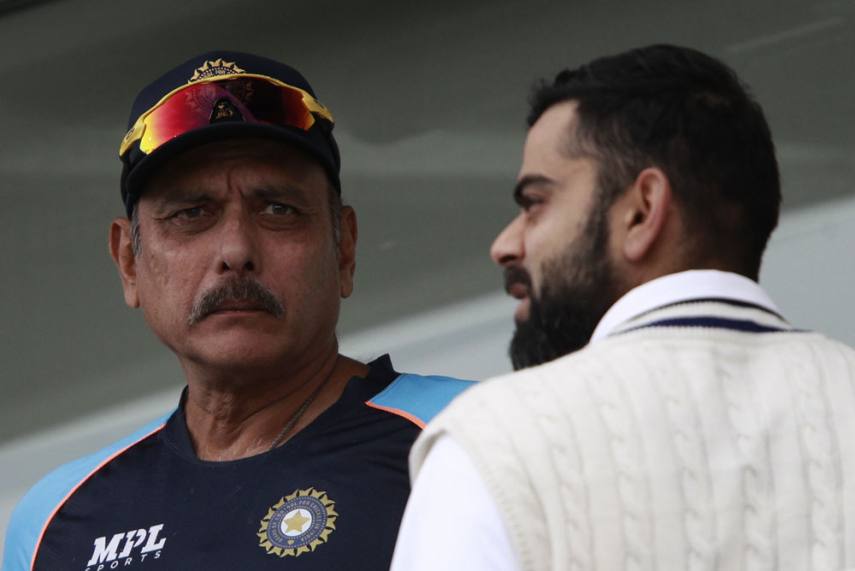Virat Kohli has resigned from Test captaincy. Naturally, the search for the next captain is on. BCCI is finding it tough to replace the maverick champ. Apparently, options are quite few and far. Due to their Horses for Courses policy, the Shastri-Kohli duo has not left many alternatives available against Virat’s Charisma.
34-year-old Rohit Sharma is the only competent option for the captain
Inconsistent K L Rahul and 34 year old but competent Rohit Sharma are being pitched for Test captaincy. Call for wayward Rishab Pant’s appointment is also catching a slow momentum. When Sourav Ganguly resigned, at least 4-5 players including Sachin, Laxman, Sehwag were equal contenders for the post.
Read more: Sourav Ganguly: The man who inherited a ‘scandal’-ised team and turned it into a team of champions
So, how could only one competent option be available after Kohli and that too at the dawn of his career? The answer lies in selection policy during Kohli’s regime.
What is Horses for Courses?
Horses for Courses is a selection policy under which you select a player based on his adaptability. If a player is good for bouncy wickets, he will get a spot in the team. Similarly, for a spinning wicket, some other player will be selected. It rarely matters how good that player has performed in the last match or series.
Is it good for players?
Tough to say. On the positive side of things, a player becomes specialized in a particular area. It helps him to establish his legacy in the short run. However, international cricket is not uni-dimensional. Everything varies including team, opposition, types of players, pitches, weather, balls.
When a player becomes uni-dimensional, he is not fit enough to represent his team in other conditions. It stops his all-round development of the game, which shortens his career.
Is it good for the team?
Both, Yes and No. Yes in the short run and big NO in the long run. In the short run, it provides options for the captain to flex his captaincy muscles. He has eleven players to choose from fifteen available options. He can choose them according to team’s needs and get the desired result for the team. Kohli’s phenomenal success is a result of his horses for courses policy only. In fact, he made a conscious decision about this policy.
In the Long run, it leaves the team with a cloud of uncertainty. No player feels secure about his spot in the team. After a brief period, players get anxious about their spots. Even if they are selected to perform in their favourable conditions, their insecure state of mind is not good for them and ultimately, they succumb to pressure.
Read more: Kohli and Shastri’s brazen favouritism almost made Ashwin retire
How did it turn out in Kohli-Shastri?
Not very well to be honest. Currently, only Rohit Sharma and Jasprit Bumrah are sure about their sport. That is because; they are the most adaptable of players. They have performed well in spinning as well as seaming conditions all around the world. Once Kuldeep Yadav and Yazuvendra Chahal were considered to be a permanent fixture in playing XI; today, they are nowhere on the international cricketing map.
Read more: Ravi Shastri: Time is up for the worst Indian cricket team coach
Similarly, the Indian pace battery was an unstable unit during their instinct. In spite of possessing venomous pace, Umesh Yadav is still in and out of the team. A skilled player like Mohammed Shami is there in every tour but does not get to play every match. Same goes down for batsmen as well.
Read more: The lost art of Pace Bowling is hurting Cricket
Good management prepare for the present as well as future
When a captain-coach duo sits down to select a team, their priority is jotting down the best available names. Good management trains their team for future as well. The Australian team had David Warner to replace Adam Gilchrist in batting and Brad Haddin to replace him in wicket-keeping.
Similarly, Sehwag’s legacy was replaced by Dhawan under Dhoni. All this became possible because these players got ample time and mental space to build themselves up as all-around players. Can you recall a player who can replace Kohli if he rescinds his favourable number-3 position? NO, and that’s where the fault lines in the horse for courses get exposed.
